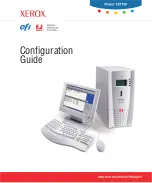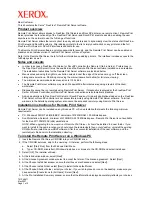
Ports
Port Modes
8-3
8.4 Port Modes
An SCS port can be used in one of three modes: character mode, PPP mode, or SLIP mode. The default port
mode is character mode.To configure a port to run PPP or SLIP, see the corresponding sections below.
Note:
Enabling PPP or SLIP on the serial console port is not recommended.
8.4.1 Character Mode
By default, the SCS ports will start character mode when the Return or Line Feed key is pressed at startup.
Users logging into the SCS will see a Username> prompt followed by a Local> prompt. SCS commands can
be entered at this prompt to configure the unit, control logins, Telnet or Rlogin to remote hosts, start PPP or
SLIP, or display information.
Note:
If the Altprompt characteristic is enabled, users will see a Login: prompt instead
of the Username> prompt. See Set/Define Server Altprompt on page 12-115 for
more details.
8.4.2 PPP Mode
A port in PPP mode runs the Point-to-Point Protocol. A port can be configured to run PPP in a number of
ways; for example, users can be authenticated, headers can be compressed, and negotiation can take place.
Because PPP isn’t designed for user interaction, the Local> prompt will not be displayed.
Both PPP and PPPDetect are enabled for all serial ports by default. PPP will automatically run once a port’s
has started up and a PPP packet is received. Because running PPP in this manner bypasses a port’s usual
authentication (using a login password or username/password combination), you should configure CHAP
or PAP authentication.
To enable a port to run PPP, use the
Define Ports PPP
command.
Figure 8-4:
Enabling PPP
Note:
For more information on PPP, refer to Chapter 7, PPP.
8.4.3 SLIP Mode
When SLIP (Serial Line Internet Protocol) and SLIPdetect (see
Automatic Protocol Detection
on page 8-4)
are enabled on a port, SLIP will run once that port’s start-up procedure is complete and a SLIP packet is
received.
Running SLIP in this manner bypasses a port’s usual authentication process (login password, etc.). As SLIP
doesn’t support authentication, no authentication will occur in this situation. To use authentication with
SLIP, see Chapter 11,
Security
.
To enable a port to run SLIP, use the following commands.
Figure 8-5:
Enabling SLIP
Local>> DEFINE PORT 2 PPP ENABLED
Local>> DEFINE PORT 2 SLIP ENABLED
Summary of Contents for SCS
Page 14: ...xii ...
Page 171: ...Modem Sharing Examples 10 6 ...
Page 314: ...Command Reference Service Commands 12 110 ...
Page 403: ...Show 802 11 Errors Rightmost Number B 5 00000002 Internal error 00000001 Internal error ...
Page 424: ...Index 13 ...
















































